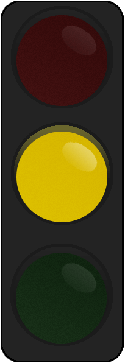GURU-GURU PON-CHAN, by Satomi Ikezawa. First published in 1998, and first published in North America in 2005.
PLOT:
Ponta is a cute little Labrador puppy. She's also a very mischievous, ditzy, and destructive little Labrador puppy and it drives her owners, the Koizumis, to the point of madness. Grandpa Koizumi is more fond of her, but that's because she's the perfect test subject for his new invention: the Guru-Guru Bone! With one lick, it can grant any animal the power of speech, but Ponta ends up devouring the whole thing. It turns out that the Guru-Guru Bone is more effective than Grandpa anticipated, as it not only gives Ponta the ability to speak, but turns her into a human toddler! She wanders into the street, only to be saved by the handsome neighbor boy Mirai. Ponta is transformed back into a dog, but the encounter ends up leaving her with a case of puppy love.
Months pass, and while Ponta has grown a little bigger, she hasn't outgrown her crush on Mirai. She rediscovers the Guru-Guru Bone, and now she can transform into an attractive, nude teenage, albeit one with the mind of a dog. Now, with Grandpa Koizumi's cooperation, she can transform at will from dog to girl, and her determination to be with Mirai may turn the lives of those around her upside-down.
STORY:
Man, only in Japan could you get a comic published where the main romance involves a dog and a teenage boy. Sure, you see a lot of paranormal romances on the shelves these days where woman fall in love (and enjoy some...er...animal husbandry) with various werecritters, but those are men who only look like animals. They still possess (to varying degrees) the minds of men. This is not the case with Guru-Guru Pon-Chan. Even in human form, Ponta is still mentally a dog. She's hyperactive, loyal to a fault, possesses a massive appetite, has to learn to read, write, and speak, and likes to chase cats; she just happens to look like a cute blonde teenager as she does so.
At the very least, the romance seen here is completely innocent, and the romantic subplot is rather minor compared to the set-up for the plot and the comedic mayhem Ponta wreaks in both canine and human form. To put it more simply, this is not a story about a dog that wants to hump a guy, but instead about a dog that has to learn to live and act as people do (and mostly fails at it). The whole volume is sweet, simple, and even childlike in tone, which would certainly explain the multitude of poop jokes. Most of the humor comes from Ponta's exaggerated but still recognizable behavior, and dog owners and lovers will recognize and laugh at her behavior in much the same way cat lovers would giggle at Chi's Sweet Home. As long as you're willing to accept the weirdness of this concept at face value, you'll find here a silly little story that plays things for yuks, not for fetish material.
ART:
The art here is sketch-like and fine-lined. I really loved Ponta's big, dark, happy eyes and her equally big, silly expressions. Her dog form tends to vary wildly from fairly realistic to making very exaggerated and distinctly un-doglike expressions and poses. Her human form tends to be a whirlwind of flailing limbs, long curly hair, and goofy faces. The rest of cast tends to be divided along two lines. The more comedic members, like Grandpa Koizumi, tend to look very simple and cartoonish. The more serious ones, like Mirai, look more like they got lost on their way to a Fuyumi Soryo manga (Mirai in particular looks eerily like Mars's Rei). They look fine on their own, but when all together the effect is rather strange. Backgrounds are simple and effective when present, which is not all that often.
PRESENTATION:
As typical for a Del Ray work, there is a honorifics guide in the front and translation notes in the back. There's also an omake where Ikezawa covers the process of making Pon-Chan from intial sketch to finished product. There is also an untranslated preview of Volume 2.
RATING:
This manga might have a weird concept, but it's a fun read, just the sort of thing to serve a silly little pick-me-up.
This series was published by Del Ray. All 9 volumes were released, and all are currently out of print.
You can purchase manga like this and much more through RightStuf.com!


No comments:
Post a Comment